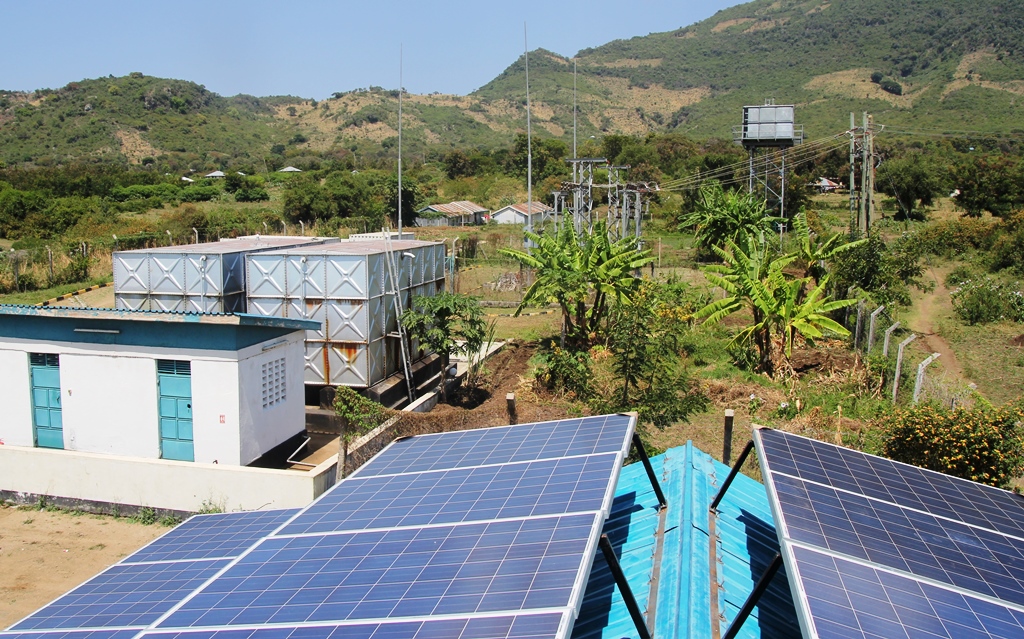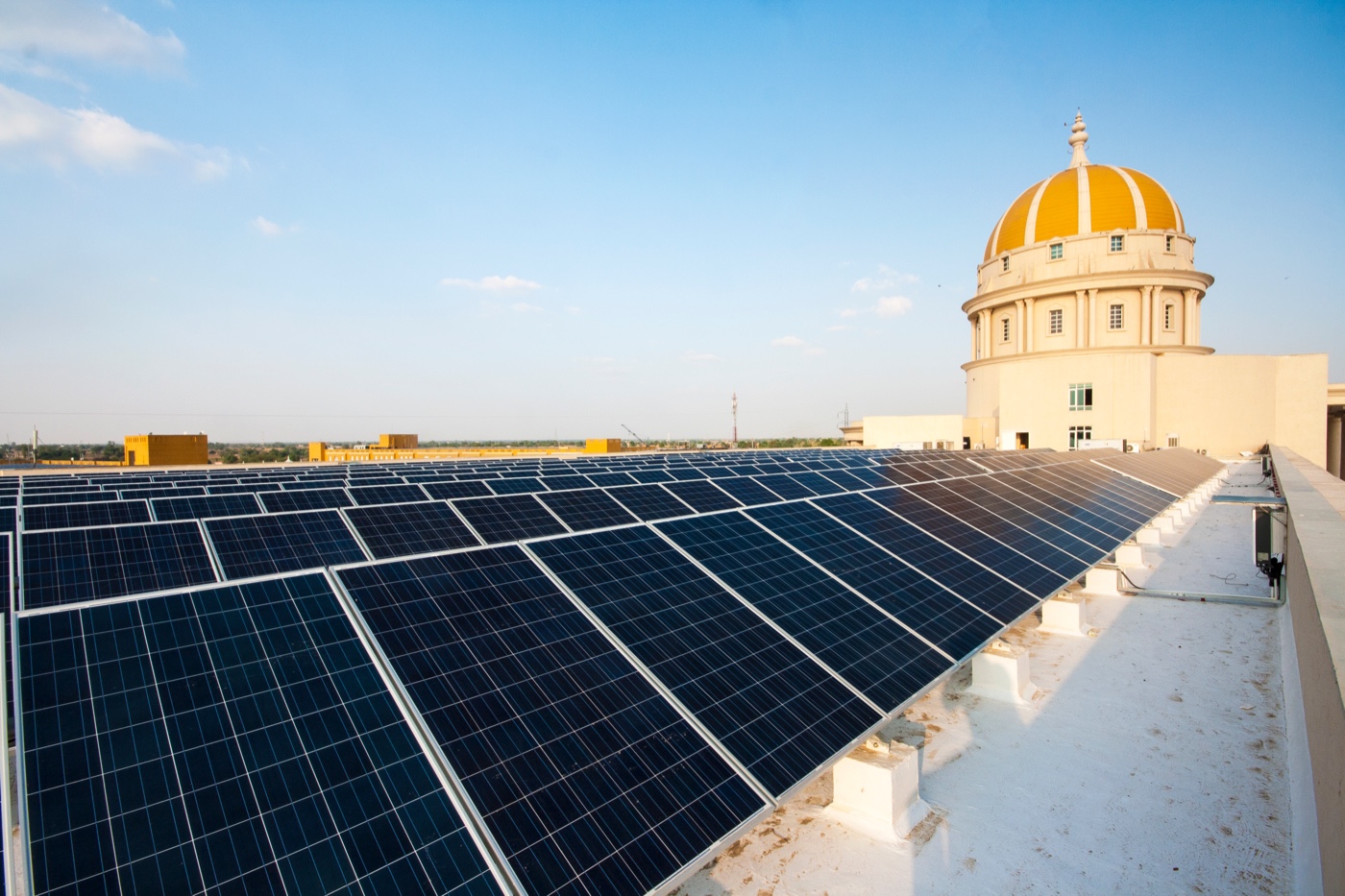Reducing the reliance on costly diesel-based power generation is high on the list of priorities for off-grid operators around the world. PV-hybrid systems alone can only go so far in meeting this need. The addition of storage can significantly alter this picture by increasing fuel savings and offsetting additional investment. Increasingly sound economics are already convincing circumspect off-grid operators such as mine owners who are starting to build the first large installations.
Diesel-based power generation is widely used around the world. Alone, for capacities above 0.5MW, there is a large global installed base of more than 110GW, with the overall market growing by >15GW annually. Diesel fuel based plants are used mainly by off-takers to compensate for inadequate power supply from centralised generation, such as in weak grids, or in remote areas not connected to a large grid at all (e.g., mining sites, islands).
Energy intensive off-grid sectors such as mining have been following the rapidly declining cost of PV-based power generation in recent times with great interest, as they have a clear motivation to offset their diesel consumption. Diesel fuel is not just subject to volatile prices in most parts of the world, it is often expensive to transport to remote sites, supply can be unreliable and bottlenecks are common in certain countries due to insufficient infrastructure such as refining capacities or political conflict and regional instability.
The advantages of renewables are well known and the economics are attractive. Generation costs for PV and wind power have never been lower. The price of large PV systems has dropped by more than half in the last five years resulting in a LCOE as low as US$0.07-0.09/kWh in locations with good solar irradiance. In contrast, despite the current slump in oil prices, the LCOE for diesel-based generation in many locations still stands at ~US$0.29/kWh, as the costs of oil only account for ~40% of the overall diesel price. Consequently, renewable energy is increasingly considered as a strong alternative by off-takers who currently rely on diesel-based power generation.
Overcoming intermittency
For off-grid or mini-grid applications, however, the intermittent character of solar power imposes a significant entry barrier to renewable energy. The availability of sun and wind often does not match the full load profiles of off-takers, for example, during the night; in fact many need a constant supply around the clock, such as mining sites with 24/7 operations. Furthermore, in contrast to applications in large and stable grids, it is typically not possible to compensate for fluctuations in renewable energy by dispatching other flexible power plants.
By hybridising diesel-based generation with PV power directly at the site, the intermittency issue can be solved and the supply of uninterrupted, high quality power ensured.
Various customer groups have already started meeting their power generation needs with hybrid-PV solutions, e.g., tourist resorts, cement plants and mines. For example in 2012, Cronimet hybridised their diesel generators at one of their off-grid South African mining sites with a 1MW photovoltaic system. The recent end of the commodities boom has further increased mine owners’ sensitivity to energy costs, with the first mines closing as fuel expenses take their toll e.g., Rio Tinto’s Groote Eylandt mine in Australia. Consequently, solar and other technologies are now emerging as viable alternatives.
Variable savings
The overall economics of a PV-hybrid system depend heavily on how much of the diesel-based generation can be replaced by PV power, or in other words, how much fuel can be saved. As adding PV requires an upfront investment that is amortised through reduced operation costs, a low PV yield leads to unfavourable IRR and payback periods that will make a hybrid solution economically unviable in many cases.
However, hybrid systems are often limited in the fuel savings they can deliver due to certain characteristics of both diesel gensets and PV plants.
For a diesel genset to function efficiently, it needs to operate above 40% utilisation. This naturally limits the PV penetration – the ratio between nominal PV power and nominal genset power (of gensets running at the same time) – to 60%. Due to PV’s intermittent nature, a spinning reserve is required in case a drop in output is experienced (e.g., due to cloud cover), enabling online diesel capacity to take over the load immediately. Hence multiple diesel gensets often run jointly at low utilisation rates, which limits overall PV penetration, reduces generation efficiency and therefore impacts achievable fuel savings.
Adding storage
The need for a spinning reserve can be reduced with the addition of energy storage to the hybrid system, thereby mitigating the drop in efficiency and fuel savings.
If PV output falls, storage is immediately available and extends the time required for the diesel genset to start up. This provides the benefit of needing fewer diesel gensets to run while allowing the remaining units to operate more efficiently at a higher utilisation rate. As some of the diesel gensets can be switched off completely, they can be fully replaced by PV capacity, increasing the PV penetration of the overall hybrid system setup.
In fact, this ability to switch off one or more generators for a defined time, or to run generators at an almost fixed operational point for a long period of time, is a key requirement for adding storage. The switching off of generators due to the inclusion of storage, however, requires the storage to have the power rating of the running generator and sufficient energy storage capacity to supply electricity demand until a black start of a generator could be performed. This prevents potential outages. Furthermore, meeting the necessary n-1 safety standard may still require another generator to remain operational, although in theory it would not be needed directly.
Hence, adding storage to a PV-hybrid system can significantly increase fuel savings and largely offset the impact of the increased investment.
According to analysis by Apricum, a 24/7 operation in a sunny region with 2,000 full irradiation hours could double its fuel savings from around 10% to 20% by adding storage, thanks to the higher operation efficiencies of the diesel gensets and more PV power replacing fossil fuel based generation. Because of this, both the project IRR and payback period remain largely unaffected despite the additional capex.
Storage does not, however, make sense in every situation. Careful assessment of a number of factors is required such as operational parameters, PV system size, cost and efficiency of the energy storage applied, as well as genset performance at different utilisation rates. Load profile is another important factor requiring thorough evaluation, which significantly affects the viability of storage.
Load profile assessment – Assumptions versus measurement
The main difference between grid connected systems and mini-grid systems is that the generation system covers the local loads that arise at any one time, but that there is no “endless” pool of demand, as there is in a large grid system. Hence, it is critical to fully understand the demand
that the system will be serving.
The demand of different types of minigrids or industrial customers is still one of the big unknowns as very little data has been gathered or is publicly available. In the real world, demand is often analysed by collecting existing information on the mini-grid, for example diesel fuel usage levels as well as the operating schedules of generators and their main loads. This is complicated by the fact that this information is often not or only partially available or even false. Gaining a detailed and solid understanding of the electrical demand is even more valuable when energy storage components are included in the system, as these add substantially to the overall cost.
On-site measurements are the best way to gain a more solid understanding of the electricity requirements of a specific mini-grid or customer. In some cases, developers of mini-grid systems measure load data for a very limited time, often only for a couple of hours or one day. It is strongly recommended to measure data for a longer period of time. Collecting three months of data coupled with other locally collected monthly costs and usage data significantly improves the understanding of the needs. Gaining access to larger pools of data for one or several years of course would be ideal to better understand the implications of seasonal variations and longer term developments.
Implications of inaccuracy
Inaccuracies from assumed data, or data measured at a poor resolution, have a negative impact on all further simulation and directly affect the size of a potential PV plant and the energy storage device. Determining these major elements is highly dependent on factors such as the demand profile and total energy consumption. An error of 5-10% on these assumptions will result in a significantly oversized renewable system with associated increased costs. In addition, the usage of an energy storage system, the number of cycles and well as the depth of discharge depend strongly on the actual energy usage. An oversized system might last longer but would have an unutilised capacity – which is also an unused investment.
An undersized system might empty quickly, resulting in a shortened lifetime due to increased times at a low depth of discharge.
Certified process of data measurement and interpolation
In order to fully establish the market segment of hybrid generation systems with investors, it is critical to have a fully transparent and standardised approach to load measurement, extrapolation and system design. This will over time become a vital step during the due diligence phase of any investment decision regarding hybrid generation systems. For that reason the German Gesellschaft für Internationale Zusammenarbeit (GIZ) GmbH, OneShore Energy GmbH and the Verband der Elektrotechnik und Elektronik (VDE), which is one of the main organisations establishing global standards for electrical systems, have teamed up to establish a relevant standard. During the process most of the leading companies in the hybrid market segment provided valuable input. The procedure for load measurements and projections and minimum technical requirements to determine the simulation input parameters for hybrid-power generation systems will be made publicly available in summer 2015.
Storage + hybrid in action
There are already several examples of PV-hybrid systems including storage projects in development with more being planned. In particular, mining companies are starting to see the economic advantages. Renewable-hybrid systems with energy storage tick the boxes in terms of delivering significant economic savings along with a reliable, high quality power supply, which for mine owners is non-negotiable.
It should be said that initial hesitation from some mine owners is still to
be overcome, as renewable energy and storage technologies represent unfamiliar territory. Bankability is also getting more difficult compared to PV-only hybrid solutions but can be improved through validated savings simulations based on real load measurements as described above. Also, government support in strong mining countries such as Australia has already sparked the first projects, which are currently being implemented. For example, in Western Australia, Sandfire Resource’s DeGrussa Copper Mine has announced the installation of 6MW/1.5 MWh of storage capacity along with 10.6MW PV to hybridise its existing 20MW diesel system, which is expected to generate more than US$7 million in annual savings. The project will be built, owned and operated by juwi Renewable Energy.
Also in Australia, the mining giant Rio Tinto Alcan is hosting a US$23.4 million thin-film PV-plus-storage facility at its bauxite mine in Weipa on the Cape York Peninsula. In the first phase, a 1.7MW PV plant will be built and later extended to 6.7MW by 2017, including battery storage for total coverage of the demand. The diesel-PV hybrid project is supported by US company First Solar and Australian solar company Ingenero and is expected to reduce daytime diesel demand from the mine’s 26MW diesel generator by up to 20% already in the first phase. By adding more solar and storage later, these savings will increase significantly. Rio Tinto Alcan will buy the electricity under a 15 year power purchase agreement.
It is very likely that these initiatives will help mine owners to better understand the technology, recognise its reliability and identify where further savings can be made. These learnings will further reduce costs in future projects, and eventually eliminate any need for government support.
Careful design and individual assessment
Energy storage can help to increase the fuel savings of a renewable hybrid system significantly. However, whether these savings are sufficient to justify the additional costs depends on the individual project specifics, as there is no general rule on when storage makes sense. Economic aspects play a major role, such as the costs of financing, local diesel costs and operational expenses of the diesel generators. The demand profile and potential renewable production also have an impact.
All in all, each project requires an intensive study to reach a sound technical decision regarding the inclusion of energy storage solutions. Since both the photovoltaic and the energy storage system require a large upfront investment and operations cost are negligible, the financing cost is probably the single largest factor driving the overall decision on the financial side. Making investors and financial institutions more comfortable is one of the key prerequisites for the adoption of more PV-hybrid systems with energy storage. It is therefore critical that all industry participants ensure that systems are carefully and transparently designed to deliver the promised savings in order to increase the confidence of both clients and the financial community.
This article was co-authored by Florian Mayr, senior advisor principal at Apricum and Philipp Kunze, co-founder and managing director of OneShore Energy. The article first appeared in the May 2015 issue of PV Tech Power.





